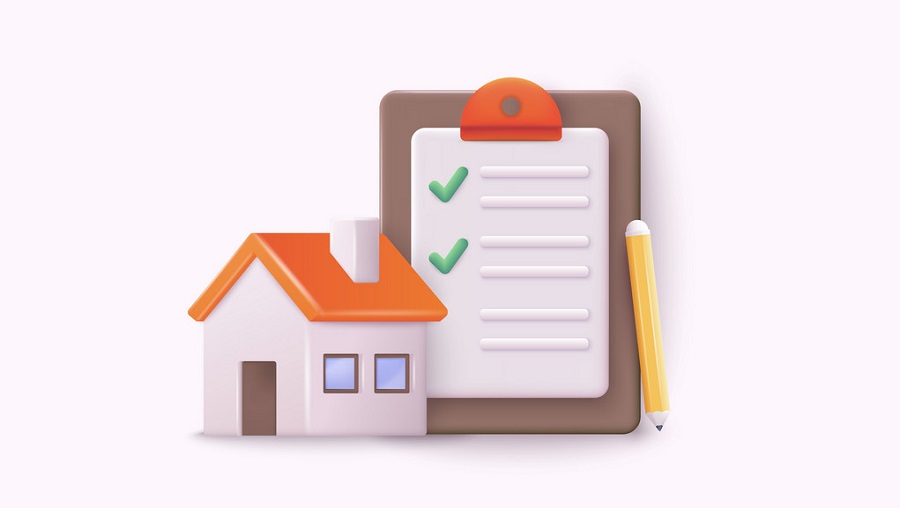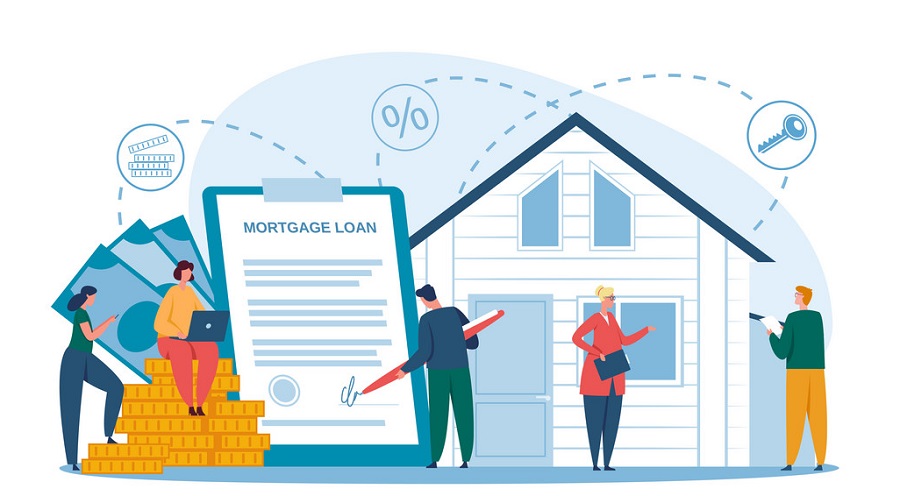Tag: apply for loan

In the unique landscape of financial planning, people frequently end up needing significant funds for different reasons like business expansion, education, or medical crises. In such situations, one road that stands out is a Loan against property (LAP). This financial instrument permits people to leverage the value of their property to get a loan. In this blog, we will explore the subtleties of Loan against property and dig into the fundamental part of “LOAN AGAINST PROPERTY ELIGIBILITY CRITERIA“.
Understanding Loan against property
A Loan against property, usually known as LAP, is a secured loan that empowers borrowers to involve their possessed property as collateral to get funds. The property could be residential or commercial, giving a versatile supporting arrangement. The borrower holds ownership of the property yet promises it as security, diminishing the gamble for the lender and frequently bringing about favorable interest rates contrasted with unsecured loans.
Key Highlights of Loan against property
1. Secured Nature: LAP is a secured loan, and that implies the lender has a substantial asset (property) as collateral, decreasing the gamble of default.
2. Versatile Usage: Funds gained through LAP can be utilized for different purposes, including business expansion, education, medical expenses, or even debt solidification.
3. Longer Tenure: LAP normally offers longer repayment tenures, permitting borrowers to manage their finances more comfortably.
4. Competitive Interest Rates: Because of the secured nature of LAP, interest rates are, for the most part, lower contrasted with unsecured loans, making it an alluring choice for those looking for affordable funding.
Loan against property eligibility criteria
While LAP presents a feasible funding choice, it’s critical to understand the eligibility criteria to get the endorsement. Lenders assess a few factors to decide a borrower’s Loan against property eligibility –
1. Property Ownership and Type: The essential eligibility model is property ownership. The borrower should be the legal proprietor of the property and, contingent upon the lender, it very well may be either residential or commercial.
2. Age Criteria: Lenders ordinarily set a base and greatest age limit for loan applicants. The age criteria might fluctuate. However, it typically ranges from 18 to 65 years.
3. Income Stability: Lenders evaluate the borrower’s income stability and repayment limit. A consistent income stream is essential to guarantee convenient repayments.
4. Credit History: A decent credit score upgrades the possibilities of loan endorsement. Lenders survey the borrower’s credit history to measure their creditworthiness.
5. Loan-to-Value Ratio (LTV): LTV is the ratio of the loan added up to the property’s value. Lenders normally offer loans up to a specific percentage of the property’s value, and a higher LTV might influence eligibility.
6. Employment and Business Stability: For salaried people, employment stability is significant, while independently employed people need to demonstrate business stability. This grants the borrower’s capacity to meet repayment commitments.
Loan against property Application Process
Whenever you’ve looked into the idea of a “LOAN AGAINST PROPERTY“ and affirmed your eligibility, the following stage is exploring the application process. The method, as a rule, includes submitting significant documents, for example, property papers, income proof, identity proofs, and others. Numerous lenders work with an online application process, making it helpful for applicants to transfer important documents and track the situation with their application.
Document Checklist for Loan against property
To smooth out the application process, gathering a far-reaching set of documents is critical. Generally required documents incorporate property papers, income tax returns, salary slips, bank statements, and identity proofs. Guaranteeing all documents are all together improves the effectiveness of the endorsement process.
Loan against property Interest Rates
One key factor that essentially influences the expense of borrowing is the interest rate. The interest rates for loans against property can be either fixed or floating. While fixed rates provide stability, floating rates fluctuate with market conditions. Understanding the ramifications of each and picking a reasonable choice in light of your financial strategy is vital for long-haul financial planning.

In today’s fast-paced world, innovation has revolutionized various aspects of our lives, including the way we apply for financial products like home loans. To apply for a home loan online has become increasingly popular because of its convenience and productivity. In this guide, we will walk you through the step-by-step process of how to apply for a home loan online.
Research and Compare Lenders
Before getting into the process of online application to “Apply For A Home Loan“ it’s essential to research and compare several lenders. Search for reputable financial institutions that offer cutthroat interest rates, favourable terms, and reliable customer service. Online reviews and testimonials can give valuable insights into the experiences of other borrowers.
Check Eligibility Criteria
Each lender has specific eligibility criteria for Home Loan seeker. Checking these criteria before proceeding with the application is crucial. Common factors include age, credit score, income, and employment status. Make sure you meet the requirements of the chosen lender.
Gather Necessary Documents
In request to maximize the online application technique, aggregating all essential documents in advance is advisable. These typically consist of evidence of personality, confirmation of address, verification of income, verification of employment, and verification of property. Possessing these documents in advance can speed up the application process.
Visit the Lender’s Website
Once you’ve selected a suitable lender and ensured you meet their eligibility criteria, visit their official website to “Apply For A Home Loan Online“. Please navigate to the home loan section, where you’ll find information about the various types of home loans they offer.
Use the Online Loan Calculator
Most lenders give an online loan calculator on their websites. Use this tool to estimate your monthly EMI (Equated Monthly Installment) based on the loan amount, tenure, and interest rate. This can assist you with planning your finances and choosing an affordable loan.
Fill in the Online Application Form
Locate the online application form on the lender’s website and fill in the expected details accurately. Be prepared to give information about your details, financial history, and the property you intend to purchase. Take your opportunity to ensure all details are placed accurately.
Upload Documents Securely
Many lenders allow you to upload the expected documents straightforwardly through their online portal. Ensure that the documents are clear, decipherable, and in the specified format. This step is crucial for the lender to confirm your information and process your application.
Wait for Verification and Approval
After submitting the online application and documents to apply for a home loan, the lender will initiate the verification process. This may involve checking your credit score, employment details, and property documents. Once the verification is finished, you will get an approval or rejection notification.
Review Loan Terms and Conditions
Assuming that your application is approved, carefully review the loan terms and conditions given by the lender. Pay attention to the interest rate, tenure, processing fees, and any other relevant terms. Before proceeding, seek clarification on any points that remain ambiguous.
Sign the Loan Agreement
Once you are satisfied with the terms, you’ll be expected to sign the loan agreement electronically. Ensure that you understand all clauses and obligations outlined in the agreement. This step is legally binding, so take an opportunity to read through the archive completely.

In today’s fast-paced world, financial crises can strike at any second, requiring quick and proficient arrangements. Applying for an instant personal loan online has turned into a popular and helpful way to address these startling financial necessities. This blog will direct you through the process to apply for an instant personal loan online, offering insights into the benefits, eligibility criteria, and steps involved.
1. Understanding Instant Personal Loans
Instant personal loans are unstable loans that give quick access to funds without the requirement for collateral. These loans are intended to meet dire financial prerequisites, like medical costs, home repairs, or unforeseen bills. The speed of approval and disbursement separates them from traditional loans, making them an ideal decision for those deprived of immediate financial assistance.
2. Benefits of Applying for an Instant Personal Loan Online
a. Quick Approval: Online platforms streamline the application and approval process, allowing for faster access to funds compared to traditional loan applications.
b. Convenience: To “APPLY FOR AN INSTANT PERSONAL LOAN ONLINE“ eliminates the need to visit physical branches, saving time and effort. It also enables borrowers to finish the process from the comfort of their homes.
c. Minimal Documentation: Instant personal loans often require minimal documentation, reducing the hassle of gathering broad paperwork.
d. Flexible Repayment Options: Borrowers can look over various repayment plans based on their financial capacity, making it easier to manage the loan.
3. Eligibility Criteria for Instant Personal Loans
Before you “APPLY FOR AN INSTANT PERSONAL LOAN“ understanding the eligibility criteria is essential. While explicit necessities may vary among lenders, normal factors include:
a. Age: Most lenders have minimum and maximum age prerequisites for loan applicants.
b. Income: Lenders assess an applicant’s income to determine their repayment capacity.
c. Employment Status: Stable employment or a regular kind of revenue is often essential.
d. Credit Score: A good credit score enhances the chances of loan approval. However, a few lenders also offer loans to individuals with lower scores.
4. Steps to Apply for an Instant Personal Loan Online
a. Research Lenders: Compare various lenders, considering interest rates, loan terms, and customer reviews to find a reputable choice.
b. Check Eligibility: Utilize online tools or contact the moneylender to confirm eligibility criteria and assess the probability of approval.
c. Gather Documents: Prepare necessary documents, for example, character proof, address proof, income statements, and bank statements.
d. Online Application: Finish up the online application form on the moneylender’s website, providing accurate and complete information.
e. Await Approval: When the application is submitted, wait for the loan specialist’s choice. Many online platforms offer instant approval, providing a quick reaction.
f. Disbursement: Upon approval, the loan amount is dispensed straightforwardly into the borrower’s bank account.
5. Tips for a Seamless Online Loan Application Process
a. Accuracy in Information: Guarantee all details given in the application are accurate and exceptional. Inaccurate information could lead to delays or dismissal of the loan.
b. Compare Interest Rates and Fees: Carefully compare interest rates, processing fees, and different charges across various lenders to pick the most practical choice.
c. Maintain a Good Credit Score: While certain lenders offer loans to individuals with lower credit scores, maintaining a good credit history works on the chances of approval and could get better interest rates.
d. Review Terms and Conditions: Completely read and understand the terms and conditions of the loan, including repayment schedules, prepayment penalties, and any hidden charges.
e. Avoid Multiple Applications: Submitting multiple loan applications simultaneously could negatively impact your credit score. Stick to each application in turn.

In the realm of financial solutions, gold loans have arisen as an amazing asset, furnishing individuals with speedy access to assets while leveraging the natural value of gold. One crucial aspect of gold loans is the determination of the loan amount based on the gold’s weight, known as the “gold loan per gram.” We should dig into the intricacies of gold loans, revealing insight into how gold loan per gram plays a pivotal role in this dynamic financial instrument.
Understanding Gold Loans
Gold loans have gained popularity as a protected and proficient means of obtaining speedy assets, especially for individuals facing dire financial necessities. Unlike traditional loan “GOLD LOAN“ are backed by the borrower’s gold jewelry, coins, or bars, making them a good form of credit. This collateral significantly decreases the gamble for lenders, enabling them to offer serious interest rates and quick approval processes.
The Gold Loan Process
1. Appraisal of Gold: The most vital phase in acquiring a gold loan includes the evaluation of the gold things introduced by the borrower. Trained appraisers assess the purity and weight of the gold to decide its market value.
2. Loan Amount Calculation: The loan amount is calculated based on the appraised value of the gold. Lenders typically offer a percentage of the gold’s value as the loan amount, guaranteeing a margin of safety for the two players.
3. Interest Rates: “GOLD LOAN INTEREST RATES“ are generally lower compared to other forms of unstable loans. Lenders have a solid sense of reassurance because of the collateral, bringing about favorable terms for borrowers.
Significance of Gold Loan Per Gram
1. Weight Matters: The gold loan per gram is a critical factor in deciding the loan amount. Lenders utilize the weight of the gold to assess its value and thus conclude the amount they will lend. Typically, the higher the gold loan per gram, the more substantial the loan amount.
2. Purity Plays a Role: In addition to weight, the purity of the gold also impacts the loan amount. Higher purity gold commands a higher value, leading to a more favorable gold loan per gram and, thus, a larger loan amount.
3. Market Fluctuations: Gold prices are subject to market fluctuations. Lenders consider the ongoing market value of gold while deciding the loan amount, and borrowers ought to know that changes in gold prices can impact the loan-to-value ratio.
Factors Affecting Gold Loan Per Gram
1. Purity and Carat: The purity of gold is measured in Carats, with 24 Carats being the most flawless form. Lenders are usually inclined toward higher Carat gold as it holds more value, undoubtedly influencing the “GOLD LOAN PER GRAM“.
2. Gold Jewelry Design: The design intricacy of gold jewelry can affect its appraisal. Basic and unadulterated gold things often bring higher values compared to complicated or alloyed designs.
3. Lender Policies: Each lender may have various policies regarding the gold loan per gram. Borrowers need to know about these policies and pick a lender offering favorable terms.
4. Local Market Conditions: The gold loan per gram can also be affected by regional market conditions. In certain areas or regions, the demand for gold loans could impact the appraisal and hence affect the gold loan per gram offered by lenders.

Chasing after satisfying dreams, financial constraints often present significant obstacles. Whether it’s expanding a business, funding education, or managing unanticipated expenses, the requirement for substantial funds can arise suddenly. During such occasions, leveraging assets like property can be a reasonable option, and a Loan against property (LAP) arises as a viable arrangement.
Understanding Loan against property
What is a Loan against property (LAP)?
A Loan against property is a tied-down loan that allows individuals to get funds by mortgaging their property. It very well may be a residential or commercial property, filling in as collateral for the loan amount sanctioned by financial establishments.
Eligibility Criteria and Documentation
Financial foundations think about various factors prior to approving a “Loan against property“ including the property’s value, the applicant’s income, age, credit score, and repayment capacity. Documentation typically incorporates property papers, income proof, identity and address proofs, and bank statements.
Benefits of Loan against property
Higher Loan Amounts: Compared to unstable loans, LAP offers substantially higher loan amounts. The loan quantum is not set in stone by the property’s value and the borrower’s eligibility criteria.
Lower Interest Rates: If you are against property, LAP will, in general, offer lower interest rates compared to unstable loans like personal loans or credit cards. The interest rates are typically fixed or floating, contingent upon the moneylender’s terms.
Flexible Repayment Options: LAP gives flexible repayment options, allowing borrowers to pick between fixed or floating interest rates and longer repayment tenures. This adaptability eases the weight of repayment, guaranteeing affordability.
Versatile Usage: The acquired amount from a Loan against property can be used for various purposes like business expansion, education, medical expenses, debt consolidation, or any other financial prerequisites.
Understanding Loan against property EMIs
What are EMIs?
Equated Monthly Installments (EMIs) are fixed payments made by borrowers to repay the loan amount along with the interest over a foreordained period. The EMI amount remains constant all through the repayment tenure.
Factors Affecting Loan against property EMIs
• Loan Amount: A higher loan amount results in higher “Loan against property EMIs“.
• Interest Rate: Higher interest rates lead to higher EMIs.
• Loan Tenure: Longer tenures lessen the EMI amount but increase the overall interest payout.
• Credit Score: A borrower’s creditworthiness plays a pivotal job. A higher credit score often brings about lower interest rates, like this affecting the EMI amount decidedly.
• Type of Interest Rate: Selecting a fixed or floating interest rate unexpectedly impacts EMIs. While fixed rates offer stability, floating rates may lead to fluctuations in EMIs based on market conditions.
• Processing Fees and Other Charges: Additional fees, like processing charges, administrative fees, or insurance premiums, can marginally increase the overall EMI amount. Understanding these charges is essential while assessing loan affordability.
Managing Loan against property EMIs
Budget Planning: Create a powerful budget plan that accommodates the EMIs comfortably without straining your finances. Think about your income, expenses, and other financial obligations while planning.
Prepayment Option: A few banks offer the adaptability of prepayment or part-payment of the loan amount. Use any surplus funds to diminish the outstanding principal amount, in this way decreasing the overall interest payout.
Avoiding Default: Guarantee convenient payment of EMIs to avoid penalties and adverse consequences for your credit score. Defaulting on payments can lead to the moneylender initiating legal action and eventual property abandonment.

The acquisition of a home financing is a critical achievement on the path to homeownership. Online home loan applications have become more streamlined and accessible because of the conveniences of the digital age. This guide elucidates the techniques entailed to apply for home loan online, thereby enabling individuals to begin the process of becoming owners effortlessly.
The Home Loan Online Application Process
• Research and Preparation: Before beginning the online application to “APPLY FOR HOME LOAN“ incorporate necessary documents, for example, identification, proof of income, property details, and credit history. A strong application is predicated on your insight into your financial situation and the sort of loan you genuinely want.
• Selecting the Right Lender: Investigate the various lenders that give online home loan administrations. By comparing interest rates, repayment terms, and customer reviews, one can recognize a reputable lender who meets their particular requirements.
• Online Application Submission: When a lender has been chosen, continue to complete their application form on their site. Guarantee completeness and clarity by filling out all the details. Typical forms involve details regarding the applicant’s occupation, income, property, and required loan amount.
Significance of Applying for a Home Loan Online
• Convenience and Accessibility: To “APPLY FOR HOME LOAN ONLINE“ offers the convenience of completing the process from any location with an internet association, which is number one in terms of accessibility. Thus, time and effort are actually saved as physical visits to the lender are delivered unnecessary.
• Quick Processing and Approval: Compared to conventional techniques, Online Applications often go through processing all the more quickly. The digital platform facilitates the bearing and verification of documents, thereby accelerating the approval strategy.
• Application Status Monitoring: The majority of online platforms give the functionality to screen the real-time status of your application. This transparency guarantees that you are reliably updated on the advancement of your loan approval.
• Comparison and Analysis: Online platforms facilitate the comparison of interest rates, terms, and customer reviews across a large number of lenders. The arrangement of this accessibility engages borrowers to practice informed judgment while selecting a lender, thereby enabling them to choose a lender that most intently compares to their financial goal.
• Constant Availability: In contrast to physical locations which operate according to explicit hours, online platforms are available at all times. This adaptability enables borrowers to start applications or direct information searches at their tact, independent of temporal constraints or plans for getting work done.
Tips for a Successful Home Loan Online Application
• Information Accuracy: Guarantee that all details gave in the online form are exact and current. Blunders or inconsistencies in the application may bring about delay or dismissal.
• Complete Documentation: To make the verification process easier, present all standard documents in a helpful manner. Documentation that is insufficient may cause a delay in the approval process.
• Continue Communication: Maintain an ongoing dialog with the lender. Quickly answer any enquiries or solicitations for supplementary information in request to guarantee a seamless application system.
Conclusion
A strong path to homeownership is given by applying to a home loan online. The digital platform’s arrangement of accessibility, speed, and transparency adds to the simplification of the application process, rendering it a favored choice among various individuals. You establish a favorable point of reference to apply for home loan application by comprehending the methodology entailed, discerning the most suitable lender, and guaranteeing request accuracy. Embrace the digital advancement in lending and with certainty start your excursion towards acquiring the home of your choice.
